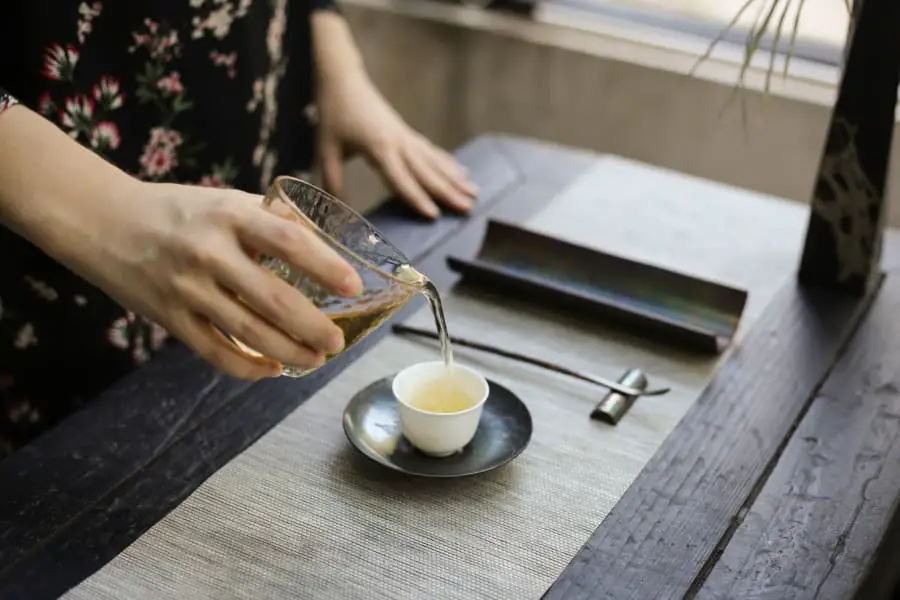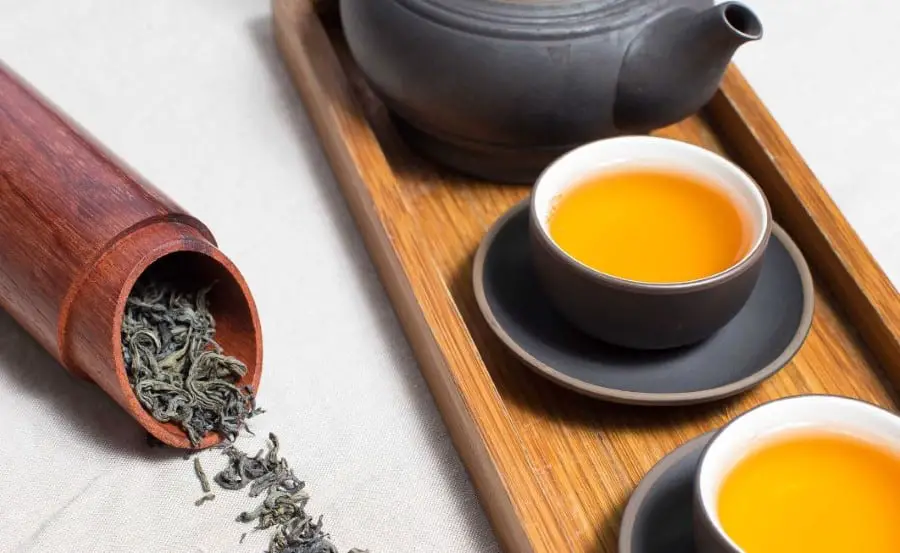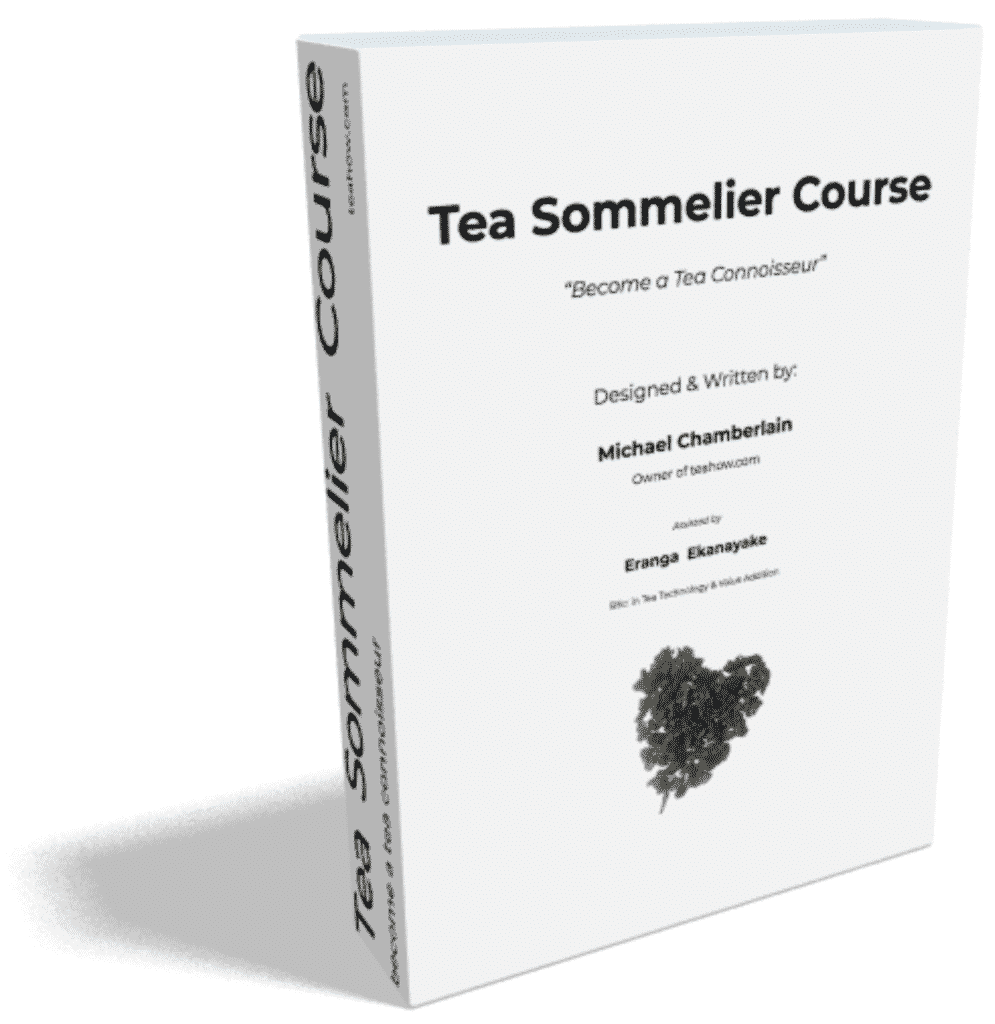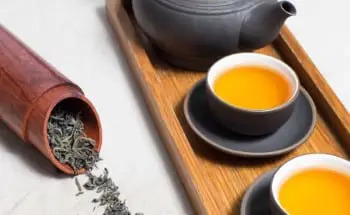We’re going to cover the health benefits of yellow tea, the side effects, the origins, how to make it, and more!
The Chinese are some of the highest consumers of tea in the world. As such, it is no wonder that several types of tea originate from China, Yellow tea is one such tea. This tea is considered to be the rarest type of tea in the world.
So, what is yellow tea? Yellow Tea is made from the Tea Plant Camellia Sinensis and gets its name from its liquor-like color. Sweet, bright, and floral taste. A gentle fruity, floral aroma. Yellow tea has a medium body, so the flavor is neither too strong nor too weak. Yellow tea is sometimes referred to as Huang cha.
Yellow tea is not only exceptional in terms of taste and feel, but it also offers a number of health benefits. These qualities make yellow tea a must-try for all tea lovers. Although not scientifically proven, many tea experts believe that yellow tea has more health benefits than other types of tea, including green tea.
All of these things are something you would learn as a tea specialist.
History of Yellow Tea
Yellow tea might not be a common type of tea, however, it is anything but a new discovery. Yellow tea dates back to the 16th century to the time of early Qing Dynasty (1644-1912). Initially, yellow tea was reserved for emperors only.
There are some reports that the usage of yellow tea can be traced back even further to the Tang Dynasty. At the time, yellow was considered to be the color of emperors, which is why it was only fitting for the emperors to consume yellow tea was their tea. As such, yellow tea was prepared with immense care with fine leaves to be used as a tribute tea for the Imperial Court.
It was also a common gift for an emperor to bestow upon a guest. A gift of Yellow tea to the Danes is what brought Yellow tea to the attention of the West.
Origin of Yellow Tea
Yellow tea originates from China, mainly from the provinces of Hunan, Sichuan, and Zhejiang. There are other areas of the country where the atmosphere is suitable for growing yellow tea leaves, however, most of the supply of yellow tea leaves come from the high mountains these three provinces.
In the province of Hunan, yellow tea is grown on the mountainous island of Jun Shan. Jun Shan is only a one-kilometer-wide island in Dongting Lake. This area produces almost five hundred kilograms of yellow tea per year. Similarly, in Sichuan the yellow tea leaves are grown on Meng Ding mountain and in Zhejiang, they are grown on the mountain of Mo Gan.
There is another yellow tea that originates from Korea and is called the Korean Yellow Tea. It might be called yellow tea, but it is very different from Chinese yellow tea. It differs from Chinese yellow tea not only in characteristics and taste but also in the style of production.
Therefore, many tea experts believe that only China yellow tea is the original yellow tea and all of the rest are merely variations of green tea.
Learn More About The History of Tea.

Types of Yellow Tea
In contrast to the plethora of the types of green tea, yellow tea only has three types, based on the area where the tea leaves are grown. These types are Jun Shan Yin Zhen, Meng Ding Huang Ya, and Mo Gan Huang Ya. As the name suggests, Jun Shan Yin Zhen comes from the province of Hunan, Meng Ding Huan Ya from Sichuan and Mo Gan Huang Ya from Zhejiang.
Jun Shan Yin Zhen is the most famous of the three as it has some historical significance attached to it too. Rumour has it that Mao Zedong declared this type of yellow tea as his favorite tea.
Considering that Chairman Mao was raised in the same province as the province where Jun Shan Yin Zhen is produced lends credibility to this rumor. Due to the limited production of this tea, it is usually consumed by locals only and is rarely available outside China.
In the past, there were a few other types of yellow tea too. However, with time, the production of those has stopped due to different factors. For instance, the once very famous yellow tea, Huo Shan Huang Ya which was grown in the province of Anhui is nowhere to be seen now.
The reason behind this is that Anhui is a poor province and as such is unable to bear the high cost attached to the production of yellow tea.
Sealing Yellow
The production of yellow tea is a comparatively difficult and time-consuming process. Moreover, it requires a skill that not many people have anymore. The production process is quite similar to that of green tea, but it has one additional step which is the unique factor and major differentiator of yellow tea production.
This step is called sealing yellow or as the natives call it ‘men huan’. It is this extra added step that makes yellow tea yellow, so special and rich with health benefits. This step involves encasing and steaming the tea leaves. Due to men huan, yellow tea oxidizes at a slower rate which gives it a mellow taste and removes the grassy flavor.
Want to start? Why not start with a Chinese, Organic, rare Huang Cha yellow tea, it’s available on Amazon!
Health Benefits of Yellow Tea
Yellow tea provides several health benefits. To name a few, yellow tea is…
- Good for skin health
- Helps with weight loss
- Helps to keep teeth healthy
- Prevents diabetes
- Reduces the risk of neurogenetic diseases
- Aides in countering liver problems
- Helps with inflammatory bowel disorders
- Prevents some disorders related to bones.
Moreover, yellow tea also enhances mental alertness and promotes longevity. Due to these benefits of yellow tea, consuming it regularly can be more beneficial to a person than any other type of tea, even green tea. Thus, one can say yellow is the new green. A few of these health benefits are mentioned below in detail.
Yellow Tea is Rich in Antioxidants
Yellow tea is one of the best natural sources of antioxidants. It is so rich in antioxidants that neither green nor any other type of tea can beat it. According to a study, yellow tea shows the most antioxidant activity when compared with other types of tea. In fact, yellow tea has up to 3 times as many antioxidants as green tea.
The high level of antioxidants in yellow tea takes care of the free radicals in the body. It acts as a natural antioxidant for the body and gives rise to several health benefits.
Yellow Tea Helps with Weight Loss
Yellow tea is referred to as diet tea because of its almost magical ability to promote weight loss. It works even better if it is used without sugar or any other artificial sweetener.
Yellow tea does not reduce weight temporarily like many other teas. Instead, it helps maintain lower body weight as it simultaneously burns fat and improves the rate of metabolism. This way a person who consumes yellow tea regularly is less likely to gain weight even after the initial reduction of weight. The results are usually visible within months of incorporating yellow tea in the diet.
Yellow tea contains a different type and concentration of caffeine as compared to green tea. As it is believed that caffeine helps in reduction of weight through fat absorption, therefore, yellow tea can be more helpful in losing weight rapidly than green tea or any other type of tea.
Similarly, another component named Catechin, which is found in yellow tea leaves helps in burning fat.
Yellow Tea Might Have Anti-Carcinogenic Properties
Probably one of the most important health benefits of yellow tea is that it helps in purging cancerous cells and as such, it is considered to be an effective home remedy for fighting and suppressing cancer at an early stage.
Presently, there are only a few studies in this area However, more several more researches are being conducted to really understand how effective yellow tea can be as an anti-carcinogenic and what components of the yellow tea help to fight cancer.
But again, a common belief is that the unique and very beneficial antioxidants that only yellow tea contains as well as certain polyphenols are of key importance in this regard.
This belief is further strengthened by a common observation that cancer rate in countries or areas where people consume yellow tea is lower when compared to the rest of the countries.
Yellow Tea is Good for Maintaining Liver Health
Liver-related problems can be quite difficult to treat. For a long time, it was believed that there is no cure for hepatitis. However, as science and medicine advanced, this was rectified, but it still takes time to cure the disease and medicines obviously carry their own side effects.
Yellow tea can act as a liver treatment catalyst and helps in the treatment of hepatitis and similar disorders. Again, the components of yellow tea are such that it inhibits liver inflammation thus having a restrictive effect on hepatitis.
This amazing quality is found only in yellow tea and not in green tea. It works most effectively on liver injuries as compared to all other types of teas.
Research has also been conducted using animals to study the effects of yellow tea on the liver and the study supports the belief that yellow tea has the ability to help in the treatment of liver-related diseases.
Yellow Tea Helps Control Cholesterol Levels
High levels of cholesterol in the body can cause a large number of cardiovascular problems and can even lead to a stroke, which can be fatal. Yellow tea is one of the best homemade remedies to control your cholesterol level.
Yellow tea basically works in two ways. The composition of yellow tea is of such molecules that it lowers the level of low-density lipoprotein, which is considered a bad fat. Moreover, it also prevents the absorption of cholesterol from your food into the body.
Yellow Tea Can Help Prevent and Control Diabetes
Nowadays, diabetes is one of the most commonly occurring diseases. Our diet usually contains a lot of such ingredients that cause or increase the likelihood of contracting diabetes. Yellow tea has been scientifically proven to help prevent diabetes.
The consumption of yellow tea reduces body fat, and, in this way, it reduces the chance of diabetes. This has been proven by Taiwanese scientists as well, who found out that those who have daily intake yellow tea in their diet end up having a lower body fat ratio.
A study by some Japanese scientists has proven that daily consumption of almost six cups of yellow tea can be so effective that it reduces the chance of diabetes by 33 percent. This means that in order to contract diabetes, one switch from green tea to yellow tea and can control diabetes while enjoying a sweet and floral flavor instead of a grassy one.
Yellow Tea is Good for the Skin
Yellow tea not only takes care of your health but of your skin as well. Who doesn’t want to look young and fresh forever? We all do!
Forget all anti-aging and anti-wrinkle products. Instead, incorporate yellow tea in your diet. Yellow tea can be an elixir for your skin’s life. It prevents aging and makes the skin look fresh, healthy and young.
Yellow tea contains such antioxidants and other nutritious components that enhance blood circulation to the epidermis of the skin and keeps it moisturized. It also boosts the production of collagen that acts as a glue to our skin, keeping it tight and firm.
These qualities of yellow tea prevent the outset of wrinkles and maintain natural beauty. Not just this, yellow tea also helps in removing blemishes, spots, and scars from the skin.
Yellow Tea Helps to Makes Teeth and Bones Strong
This miracle tea helps not only with wrinkles but also with bones and teeth as well.
A toothache, regardless of whether it’s due to tooth decay or tooth weakness, is always dreaded by everyone. Due to the presence of fluorides, yellow tea can make your bones and teeth strong and helps prevent tooth decay. In a similar way, it will also help those who are suffering from pain in the joints or osteoporosis and other similar bone diseases.
Get started with yellow tea, my pick is the Chinese, Organic, rare Huang Cha yellow tea, it’s available on Amazon!
Did You Know…
3 Million Tons of Tea Are Produced Every year
Find Out More Amazing Facts About Tea
Yellow Tea Side Effects
Excess of everything is bad and so is the case with yellow tea. Yellow tea has several health benefits, but too much of a good thing is never a good idea. Excessive consumption of yellow tea can lead to side effects.
Yellow tea contains caffeine and excess consumption of it can lead to caffeine addiction which gives rise to problems like insomnia and anxiety. Moreover, excessive consumption of caffeine can lead to high blood pressure, jitters, and hyper-alertness.
Yellow tea contains fluoride component and according to WHO, a limited quantity of fluoride is healthy. However, excess intake of yellow tea means excess fluoride accumulation which can lead to bone and skeletal deformities.
Besides the amount of yellow tea being consumed, the quality of yellow tea can also impact how it affects the body. Low-quality yellow tea might not prove to be beneficial for health. Thus, it is always advised to buy yellow tea from a reputable vendor.
Does your favorite brand of tea contain plastic? Find Out Here
Why Yellow is the New Green?
Yellow tea provides all the health benefits of green tea, along with some additional benefits, a great taste, and an enticing aroma. Moreover, yellow tea is lighter on the stomach as compared to green tea and is free of the grassy flavor that is a characteristic of green tea.
Over the years, the production of yellow tea has declined greatly due to the difficult production process and higher production costs, but as people are becoming more and more health conscious, and the curiosity around this type of tea increases, the extra effort and higher price just might be worth it.
Find Out Where Tea is Grown in the List of Top Tea Producing Nations.

How to Prepare Yellow Tea
Yellow teas brewing technique is similar to that of white tea. The tea leaves need to be steeped at a cooler water temperature (75 to 80 °C) compared to oolong or black tea leaves.
- Partly fill your teapot or brew cup with hot water to preheat it.
- After giving the vessel a few quick swirls, discard the water
- Next, add a heaped teaspoon of the tea leaves and pour hot water (75 to 80 °C) over it
- Cover the vessel and let it steep for about 3 minutes
- Enjoy Healthy Yellow Tea.
Bear in mind though that these brewing instructions and measurements are merely a rough guideline. Feel free to tweak them a bit to better suit your preferences. Increase or decrease the number of tea leaves you use – depending upon whether you find the concoction too weak or too strong.
You can also rectify this by changing the steeping time. Moreover, if you find the tea to be too bitter, use cooler water.
If you’re interested in tea to this extent, then why not enhance your tea skills even further with my Tea Sommelier course!

Improve your tea skills with the teahow Tea Sommelier Course
Whether for enjoyment or because you’re considering a career as a tea sommelier. This course has everything you need to enhance your tea knowledge and tea tasting skills.
This course keeps it simple with step by step tea tasting, and easy reference guides
A course for your leisure, or as a precursor to a career in the tea industry. Find out what a tea sommelier actually does, career paths, and what they earn.
Conclusion
For me, Yellow Tea, whilst a little bit more expensive, is actually the hidden gem of teas. It carries with it benefits of Green Tea, but then adds another layer on top for good measure!
Not only that, but Green Tea has been the go-to-tea that everyone has gone to in the past. I’m all for shaking it up a little. There’s an undiscovered cool-factor about Yellow Tea that stands out from the crowd and takes you along with it.
Next time a friend says ‘Would you like to join us for Green Tea?’ just casually reply – ‘…sure – got any Yellow Tea?’ And let the uber-style vibes do the rest!
I hope this was helpful, I’d really like to spread the love for yellow tea as the undiscovered jewel of the tea world!
Get started with yellow tea, my pick is the Chinese, Organic, rare Huang Cha yellow tea, it’s available on Amazon!
Related Questions
Can I reuse the tea leaves for yellow tea for multiple infusions? Most brands of yellow tea will give you 3 to 6 infusions from the same tea leaves. However, the potency of the tea leaves will reduce each time, so increase the time you steep it for by 30 seconds each time.
What teaware should I use for yellow tea? Any type of teaware will work, however, by opting for a glass teapot, you can see the yellow tea leaves unfurl in a beautiful manner.

Where can you buy a good yellow tea